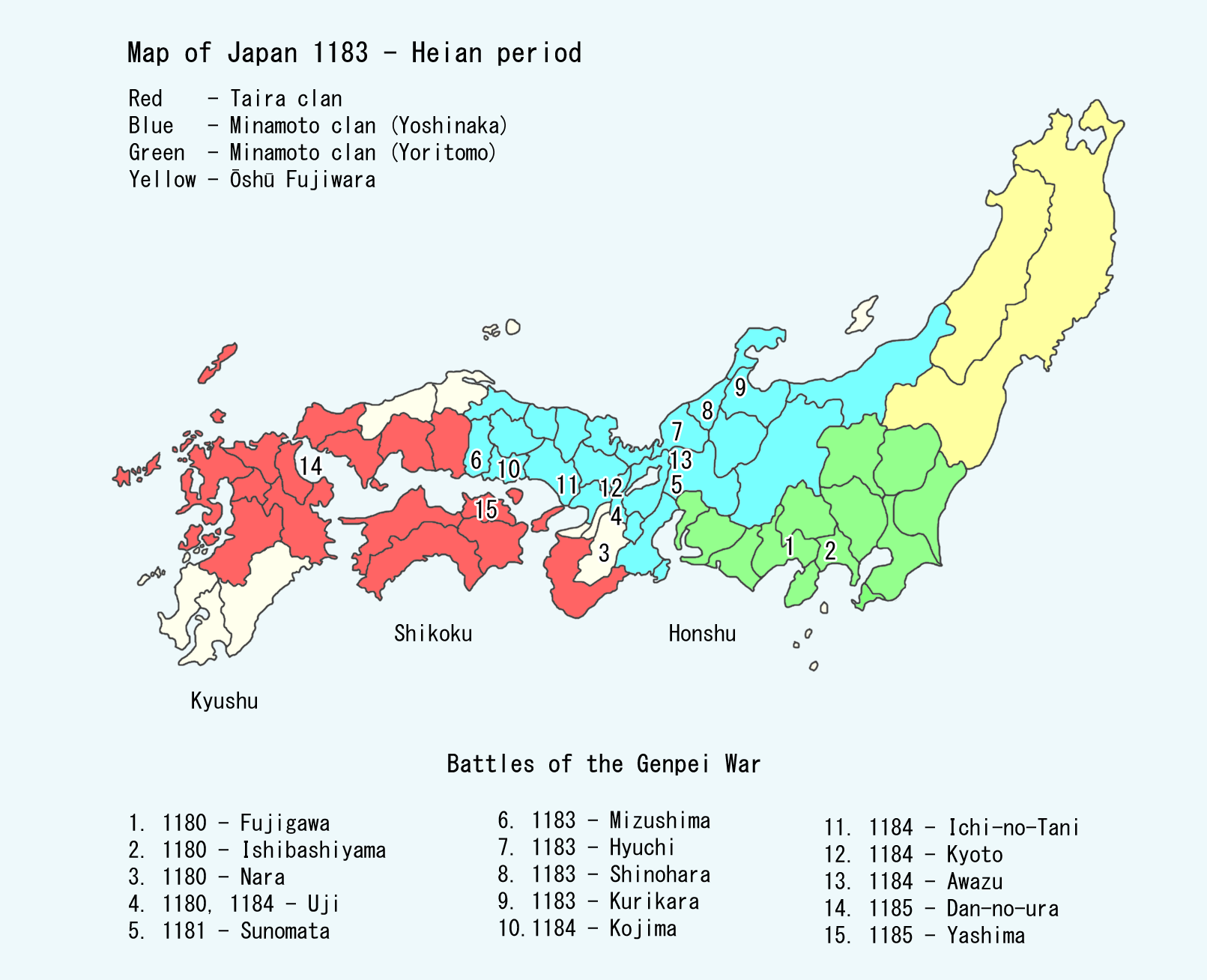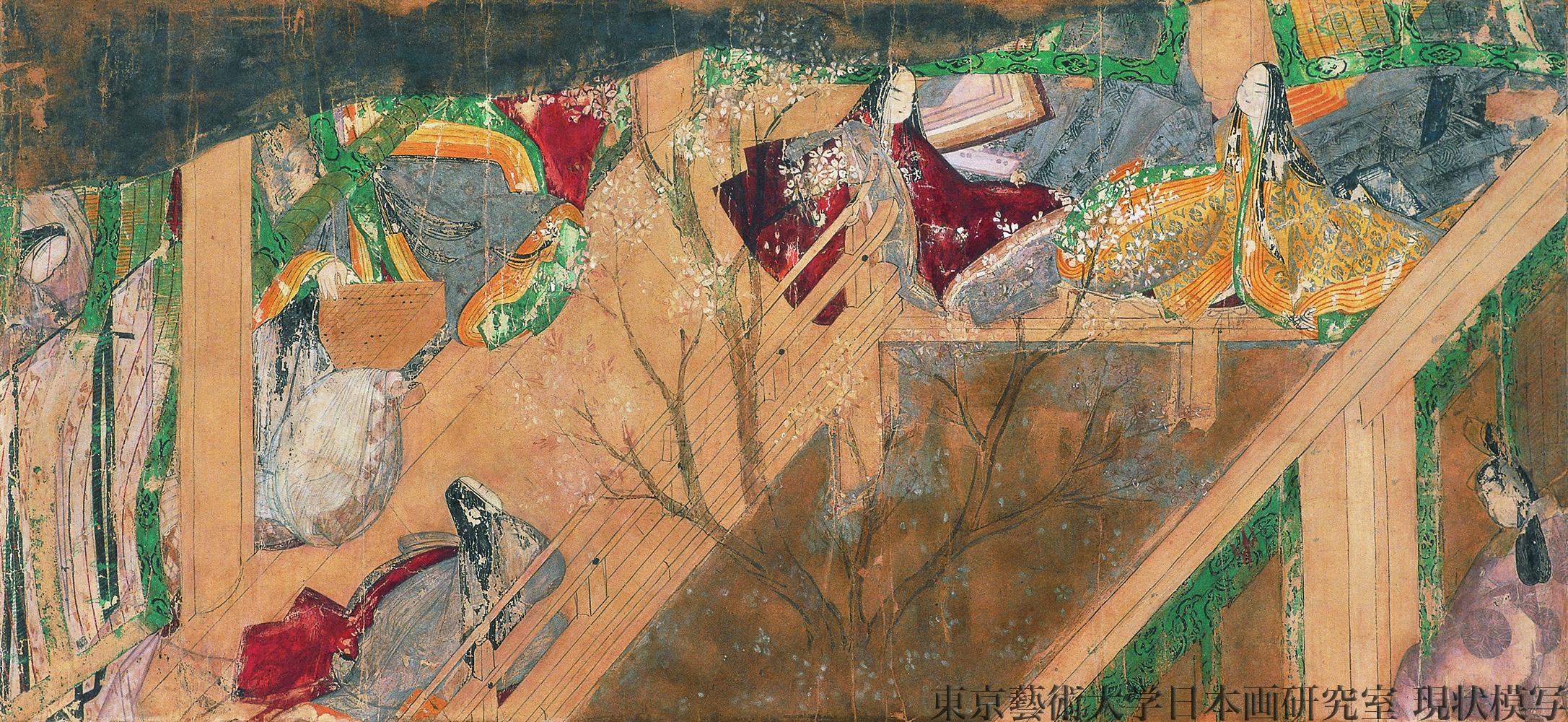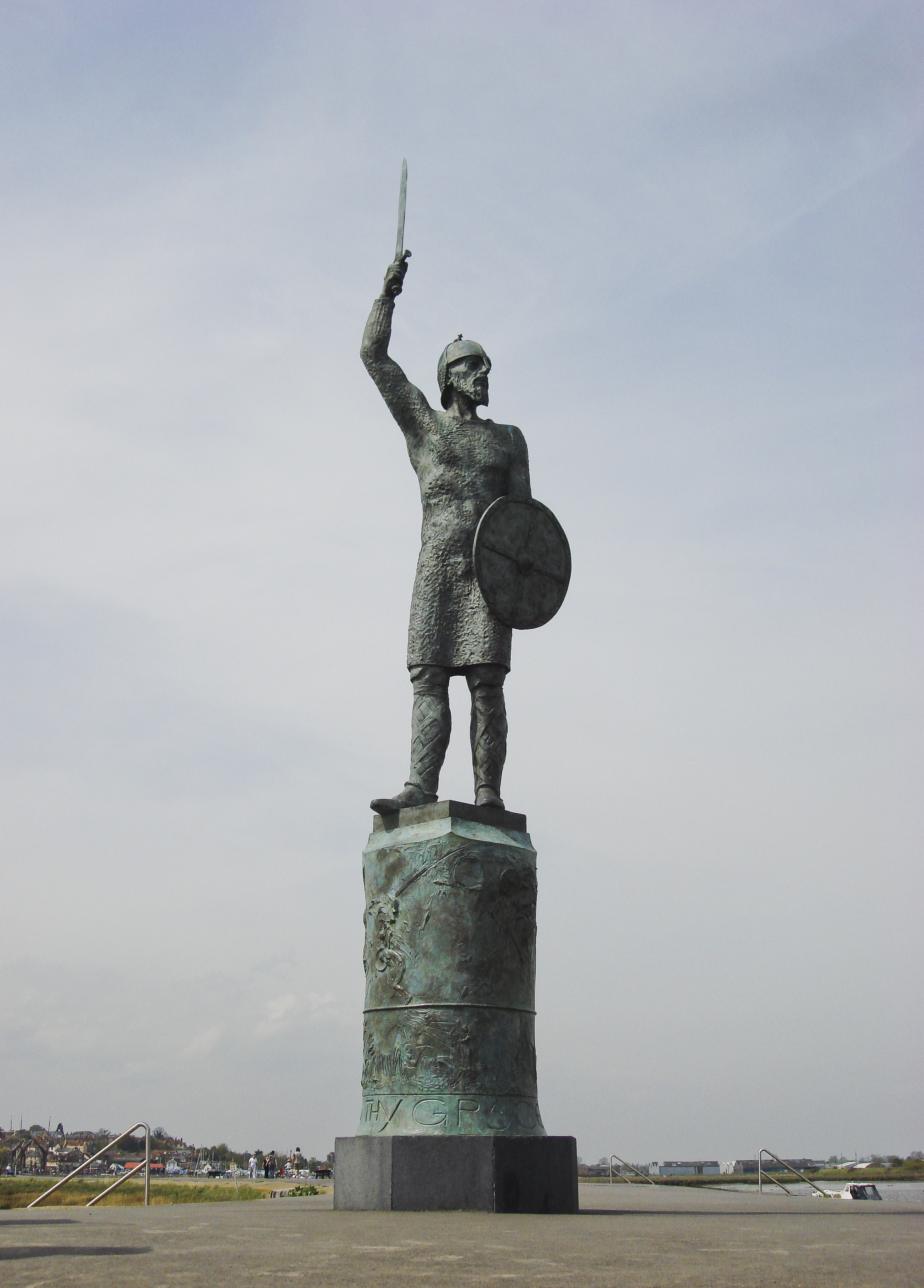|
Taira No Kanemori
Taira no Kanemori ( ? –991, 平 兼盛) was a middle Heian period ''waka'' poet and Japanese nobleman. He is designated as a member of the Thirty-six Poetry Immortals and one of his poems is included in the famous anthology Hyakunin Isshu. He was a member of the Taira clan. Kanemori's poems are included in several official poetry anthologies from the Heian Era. A personal collection known as the ''Kanemorishū'' (兼盛集) also remains. His daughter Akazome Emon was a Japanese '' waka'' poet and early historian who lived in the mid-Heian period. She is a member both of the and the Thirty-Six Immortal Women Poets. Biography Akazome Emon's year of birth is unknown, but she was likely born between Te ... was also a distinguished waka poet, though she is usually reckoned as the daughter of her adoptive father, Akazome Tokimochi. External links E-text of his poems 991 deaths Year of birth unknown 10th-century Japanese poets Hyakunin Isshu poets Taira clan [...More Info...] [...Related Items...] OR: [Wikipedia] [Google] [Baidu] |
Hyakuninisshu 040
is a classical Japanese anthology of one hundred Japanese ''waka'' by one hundred poets. ''Hyakunin isshu'' can be translated to "one hundred people, one poem ach; it can also refer to the card game of ''uta-garuta'', which uses a deck composed of cards based on the ''Hyakunin Isshu''. The most famous and standard version was compiled by Fujiwara no Teika (1162–1241) while he lived in the Ogura district of Kyoto. It is therefore also known as . Compilation One of Teika's diaries, the ''Meigetsuki'', says that his son Tameie asked him to arrange one hundred poems for Tameie's father-in-law, Utsunomiya Yoritsuna, who was furnishing a residence near Mount Ogura; hence the full name of ''Ogura Hyakunin Isshu''. In order to decorate screens of the residence, Fujiwara no Teika produced the calligraphy poem sheets. Hishikawa Moronobu (1618–1694) provided woodblock portraits for each of the poets included in the anthology. Katsukawa Shunshō (1726–1793) designed prints for ... [...More Info...] [...Related Items...] OR: [Wikipedia] [Google] [Baidu] |
Heian Period
The is the last division of classical Japanese history, running from 794 to 1185. It followed the Nara period, beginning when the 50th emperor, Emperor Kammu, moved the capital of Japan to Heian-kyō (modern Kyoto). means in Japanese. It is a period in Japanese history when the Chinese influence on Japanese culture, Chinese influences were in decline and the national culture matured. The Heian period is also considered the peak of the Japanese Emperors of Japan, imperial court, noted for its Japanese art, art, especially Japanese poetry, poetry and Japanese literature, literature. Two syllabaries unique to Japan, katakana and hiragana, emerged during this time. This gave rise to Japan's famous vernacular literature, with many of its texts written by court ladies who were not as educated in Chinese as their male counterparts. Although the Imperial House of Japan had power on the surface, the real power was in the hands of the Fujiwara clan, a powerful Kuge, aristocratic family wh ... [...More Info...] [...Related Items...] OR: [Wikipedia] [Google] [Baidu] |
Waka (poetry)
is a type of poetry in classical Japanese literature. Although ''waka'' in modern Japanese is written as , in the past it was also written as (see Wa (Japan), Wa, an old name for Japan), and a variant name is . Etymology The word ''waka'' has two different but related meanings: the original meaning was "poetry in Japanese" and encompassed several genres such as ''chōka'' and ''sedōka'' (discussed below); the later, more common definition refers to poetry in a tanka, 5-7-5-7-7 metre. Up to and during the compilation of the in the eighth century, the word ''waka'' was a general term for poetry composed in Japanese, and included several genres such as , , and . However, by the time of the ''Kokinshūs compilation at the beginning of the tenth century, all of these forms except for the ''tanka'' and ''chōka'' had effectively gone extinct, and ''chōka'' had significantly diminished in prominence. As a result, the word ''waka'' became effectively synonymous with ''tanka'', and t ... [...More Info...] [...Related Items...] OR: [Wikipedia] [Google] [Baidu] |
Thirty-six Poetry Immortals
The are a group of Japanese poets of the Asuka, Nara, and Heian periods selected by Fujiwara no Kintō as exemplars of Japanese poetic ability. The oldest surviving collection of the 36 poets' works is '' Nishi Honganji Sanju-rokunin Kashu'' ("Nishi Honganji 36 poets collection") of 1113. Similar groups of Japanese poets include the Kamakura period , composed by court ladies exclusively, and the , or Thirty-Six Heian-era Immortals of Poetry, selected by (1107–1165). This list superseded an older group called the Six Immortals of Poetry. Sets of portraits (essentially imaginary) of the group were popular in Japanese painting and later woodblock prints, and often hung in temples. Kintō's Thirty-Six Immortals of Poetry # Kakinomoto no Hitomaro # Ki no Tsurayuki # Ōshikōchi Mitsune # Lady Ise # Ōtomo no Yakamochi # Yamabe no Akahito # Ariwara no Narihira # Henjō # Sosei # Ki no Tomonori # Sarumaru no Taifu # Ono no Komachi # Fujiwara no Kanesuke # ... [...More Info...] [...Related Items...] OR: [Wikipedia] [Google] [Baidu] |
Hyakunin Isshu
is a classical Japanese anthology of one hundred Japanese ''waka'' by one hundred poets. ''Hyakunin isshu'' can be translated to "one hundred people, one poem ach; it can also refer to the card game of '' uta-garuta'', which uses a deck composed of cards based on the ''Hyakunin Isshu''. The most famous and standard version was compiled by Fujiwara no Teika (1162–1241) while he lived in the Ogura district of Kyoto. It is therefore also known as . Compilation One of Teika's diaries, the ''Meigetsuki'', says that his son Tameie asked him to arrange one hundred poems for Tameie's father-in-law, Utsunomiya Yoritsuna, who was furnishing a residence near Mount Ogura; hence the full name of ''Ogura Hyakunin Isshu''. In order to decorate screens of the residence, Fujiwara no Teika produced the calligraphy poem sheets. Hishikawa Moronobu (1618–1694) provided woodblock portraits for each of the poets included in the anthology. Katsukawa Shunshō (1726–1793) designed prin ... [...More Info...] [...Related Items...] OR: [Wikipedia] [Google] [Baidu] |
Taira Clan
The was one of the four most important Japanese clans, clans that dominated Japanese politics during the Heian period, Heian period of History of Japan, Japanese history – the others being the Minamoto clan, Minamoto, the Fujiwara clan, Fujiwara, and the Tachibana clan (kuge), Tachibana. The clan is divided into four major groups, named after the Emperor of Japan, emperors they descended from: Emperor Kanmu, Kanmu Heishi, Emperor Ninmyō, Ninmyō Heishi, Emperor Montoku, Montoku Heishi, and Emperor Kōkō, Kōkō Heishi, the most influential of which was the Kanmu Heishi line. In the twilight of the Heian period, the Taira controlled the boy emperor Emperor Antoku, Antoku (himself the grandson of the powerful ''Kugyō'' Taira no Kiyomori) and had effectively dominated the Imperial capital of Heian-kyō, Heian. However, they were opposed by their rivals the Minamoto clan (the Genji), which culminated in the Genpei War (1180–1185 AD). The five-year-long war concluded with a d ... [...More Info...] [...Related Items...] OR: [Wikipedia] [Google] [Baidu] |
Heian Era
The is the last division of classical Japanese history, running from 794 to 1185. It followed the Nara period, beginning when the 50th emperor, Emperor Kammu, moved the capital of Japan to Heian-kyō (modern Kyoto). means in Japanese. It is a period in Japanese history when the Chinese influence on Japanese culture, Chinese influences were in decline and the national culture matured. The Heian period is also considered the peak of the Japanese Emperors of Japan, imperial court, noted for its Japanese art, art, especially Japanese poetry, poetry and Japanese literature, literature. Two syllabaries unique to Japan, katakana and hiragana, emerged during this time. This gave rise to Japan's famous vernacular literature, with many of its texts written by court ladies who were not as educated in Chinese as their male counterparts. Although the Imperial House of Japan had power on the surface, the real power was in the hands of the Fujiwara clan, a powerful Kuge, aristocratic family wh ... [...More Info...] [...Related Items...] OR: [Wikipedia] [Google] [Baidu] |
Akazome Emon
was a Japanese '' waka'' poet and early historian who lived in the mid-Heian period. She is a member both of the and the Thirty-Six Immortal Women Poets. Biography Akazome Emon's year of birth is unknown, but she was likely born between Tentoku 1 (957) and Kōhō 1 (964). She was officially the daughter of , but the late-Heian karonsho (book of poetic criticism) ' records that her biological father was her mother's first husband, Taira no Kanemori. A poetic exchange between Emon and Fujiwara no Michitaka, dating to around Ten'en 2 (974) to Jōgen 2 (977), when she was likely in her late teens, is the earliest dateable event in her life. At roughly this time, she went to serve in the household of Minamoto no Masanobu, and for a long time thereafter she served his daughter Rinshi ( ja), the wife of Fujiwara no Michinaga. It was also around this time (Ten'en–Jōgen) that she married , a Confucian scholar and poet of both ''waka'' and '' kanshi''. They had a son, , a ... [...More Info...] [...Related Items...] OR: [Wikipedia] [Google] [Baidu] |
991 Deaths
Year 991 ( CMXCI) was a common year starting on Thursday of the Julian calendar. Events * March 1: In Rouen, Pope John XV ratifies the first Truce of God, between Æthelred the Unready and Richard I of Normandy. * March 29: Bishop Adalberon imprisons the treasonous Duke Charles of Lorraine and his nephew Arnulf, the Archbishop of Reims. Adalberon delivers the two men to King Hugh Capet, who imprisons them and their family in Orléans. The cities of Reims and Laon are returned to Capet. * April 5: 991 Damascus earthquake in Syria: According to historian George Elmacin (13th century), the earthquake caused the fall of 1,000 houses in Damascus itself, and many people were trapped in their ruins and died. The village of Beglabec was reportedly engulfed, due to the earthquake.Antonopoulos, 1980 * Spring: Byzantine Emperor Basil II begins a campaign against the Bulgarians. * June 15: Theophanu dies in Nijmegen, and Adelaide of Italy assumes full regency over her grandson, Ot ... [...More Info...] [...Related Items...] OR: [Wikipedia] [Google] [Baidu] |
Year Of Birth Unknown
A year is a unit of time based on how long it takes the Earth to orbit the Sun. In scientific use, the tropical year (approximately 365 solar days, 5 hours, 48 minutes, 45 seconds) and the sidereal year (about 20 minutes longer) are more exact. The modern calendar year, as reckoned according to the Gregorian calendar, approximates the tropical year by using a system of leap years. The term 'year' is also used to indicate other periods of roughly similar duration, such as the lunar year (a roughly 354-day cycle of twelve of the Moon's phasessee lunar calendar), as well as periods loosely associated with the calendar or astronomical year, such as the seasonal year, the fiscal year, the academic year, etc. Due to the Earth's axial tilt, the course of a year sees the passing of the seasons, marked by changes in weather, the hours of daylight, and, consequently, vegetation and soil fertility. In temperate and subpolar regions around the planet, four seasons ar ... [...More Info...] [...Related Items...] OR: [Wikipedia] [Google] [Baidu] |







